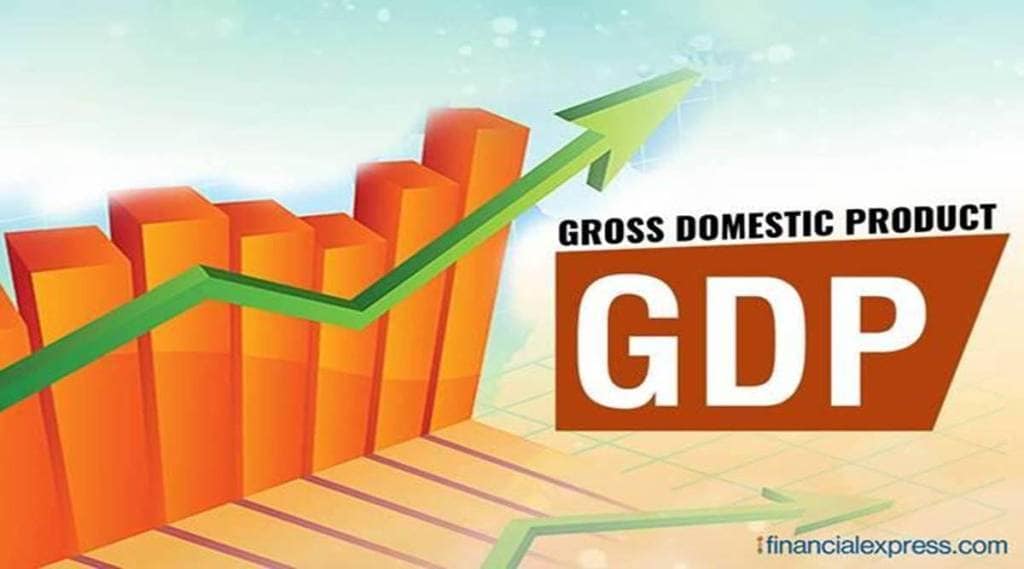By KG Narendranath
India’s growth rate slipped to a four-quarter low of 4.1% in the January-March period as a resilient post-pandemic rebound was disrupted by the Russia-Ukraine war that inflated prices of oil and other key commodities, and impeded the global supply chains.
Yet, in 2021-22, the country re-captured the fastest-growing major economy tag from China after a five-year gap, by reporting a gross domestic product (GDP) expansion of 8.7% in real terms, according to the data released by National Statistics Office (NSO) on Tuesday.
The GDP in 2021-22 came in at 1.5% bigger than in 2019-20, the year immediately before the pandemic, as few sectors other than “trade hotels and transport” lagged behind. The economic recovery was helped by a nascent pick-up in the long-elusive investment demand, a fleeting consumption binge and an eagerness of the manufacturing and construction sectors to be back on foot.
The NSO had earlier predicted the 2021-22 GDP growth at 8.8%. The economy had shrunk 6.6% in 2020-21.
Notably, the government did curb its revenue expenditure in 2021-22, in an effort to promptly address the huge fiscal slippage of the previous year. So, government final consumption spending grew at an 8-year low rate of 2.6% last fiscal.
Of course, private consumption, the main constituent of the economy, was just 1.4% above the pre-pandemic period in 2021-22. This segment in fact saw a significant recovery in the first half of the last fiscal from the abyss caused by the pandemic but turned sluggish in the latter, owing to the combined effect of the Omicron wave and the adverse geopolitical developments.
Annual consumption growth of 7.9% in 2021-22, therefore, still lagged the overall GDP growth and the 8.1% expansion in the gross value added (GVA), that reflects the supply side.
However, an impending recession in the US and Europe, high inflation and the start of rate hike cycle by the Reserve Bank of India (RBI) to rein in prices could exacerbate the economy’s growth pangs. Analysts expect the GDP growth in 2022-23 to be significantly lower than the RBI’s prediction of 7.2%, leave alone the IMF’s estimate of 8.2%.
Growth in June quarter could still be in double digits thanks to a favourable base and the immediate impact of eased mobility, but the following quarters will get less base support.
Private consumption and fixed investments are still seen on a revival path, but at a decelerated, if not disrupted, pace. This makes it again the government’s job to stand guard in the short term. Robust tax revenues resulting from the high nominal GDP would provide some additional fiscal capacity to the government to push growth to the best it can, but its efforts would require to be complemented by consumers and private investors without much delay and in good measure.
A strong bounce-back in contact-intensive sectors, which were down 11% on year in 2020-21 owing to the pandemic, is another possible push factor. Also, good monsoon rainfalls will likely ensure that the agriculture sector doesn’t lose much steam in the first half of this fiscal.
Nominal GDP on which key budget numbers are benchmarked, grew by a sharp 19.5% in 2021-22 to Rs 236.64 trillion, against 17.6% estimated earlier. This helped reduce the 2021-22 fiscal deficit marginally to 6.7% from 6.9% (as per the revised Budget estimate).
In Q4 2021-22, manufacturing GVA shrank by 0.2%, being on the decline since the first quarter of the year. All major services sectors also saw lower growth rates in the quarter, compared to the previous one.
“Peak impact of interest rate hikes on GDP will be felt only towards the end of this fiscal. But headwinds from slower global growth and higher oil prices have tilted the risks to our forecast of 7.3% for the current fiscal downwards,” Dharmakirti Joshi, chief economist at Crisil, wrote.
Among individual sectors in the output side, “financial, real estate and professional services” with a growth of 4.2% in 2021-22, was patently weak. “Agricultural, forestry and allied services” somewhat held up by its standards with a 3% GVA growth in 2021-22, compared with 3.3% in 2020-21. Manufacturing and construction sectors reported GVAs of 9.9% (on a very weak base of 8.6%) and 11.5% (-7.3%), respectively.
DK Srivastava, chief policy advisor, EY India, wrote: “(The Centre’s additional fiscal capacity) should be used to bolster both government consumption and investment expenditures. This should facilitate minimisation of the adverse growth effect of the high prices of global crude and primary commodities.” He added that with the repo rate expected to go up further, “it is the fiscal policy which will have to play a strong growth-supporting role”.
Icra chief economist Aditi Nayar said: “The growth embedded in the nominal GDP assumed by the Budget for 2022-23 is only 9% relative to the latest estimate for 2021-22, suggesting a considerable upside to the revenue forecasts made in the Budget.” The implicit price deflator-based inflation, which is a weighted average of CPI and WPI inflation, may be in the range of 10-11% in the next few quarters, Srivastava wrote.



